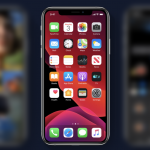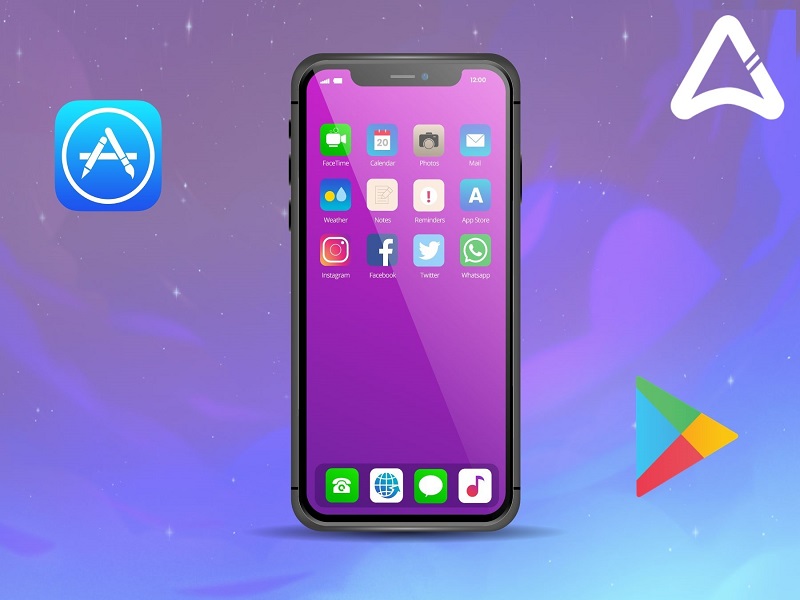If you decide to opt for native development instead of cross-platform solutions. You have to decide which language to use: the old Objective-C or the new Swift Language.
With more than one billion devices in use, iOS is the second most popular mobile platform in the world. In some regions, including the US UU., The United Kingdom and France, Apple devices continue to outperform Android in terms of smartphone sales.
That is why many companies focus their software products primarily and sometimes only on the iOS platform as a key investment opportunity and a strategic benefit.
If you are one of those smart business owners who follow the iOS application development path, probably the most important decision you will make is choosing the right technology for your product.
What is Swift and why should I use it?
Swift is a programming language compiled for iOS, macOS, watchOS, tvOS, and Linux applications. Backed by one of the most influential technology companies in the world. Swift has become one of the dominant languages for iOS development.
Open-source
The creators of Swift recognized the fact that to build a defining programming language, technology must be open to all. Then, within its three years of existence, Swift acquired a large support community and a large number of third-party tools.
Insurance
Its syntax encourages writing a clean and consistent code that can sometimes even seem strict. Swift provides security measures to avoid errors and improve readability.
Quick
Swift was built with performance in mind. Its simple syntax helps it to develop faster, it also lives up to its name: as stated on apple.com, Swift is 2.6x faster than Objective-C and 8.4x faster than Python.
Demand
It was in March 2018 the 12th most popular language surpassing Objective-C, Go, Scala and R. With more than 40K stars on GitHub and 187K StackOverflow.
Swift Language: Brief History
Creation and launch
First presented at the 2014 World Developers Conference (WWDC). The Swift programming language has generated considerable debate since then. Chris Lattner, Senior Director of Apple, Department of Developer Tools, began designing the basics of the new language in 2010.
It was not until 2013 that the team was able to solve a strategic question about how the new language would fit with the existing Objective-C ecosystem.
Forcing all iOS app developers to move to a new language could have had a great disruptive effect on the community. Therefore, the company decided to continue investing in Objective-C and at the same time commit to the development of this new “safe programming language”.
A year later, Apple’s registered developers were able to use the beta version of the new language. In the first month after its launch as part of the Xcode tools, it was downloaded more than 11 million times, according to Tim Cook.
The initial reactions to the Swift language were mixed at best. However, most of them agreed that it was too early to use Swift. The language evolved rapidly: important changes were introduced with each new version. However, this did not prevent Swift from becoming the “most beloved” technology, according to the StackOverflow Developer Survey 2015.
Convert to open source
Since Apple decided to make Swift an open-source language in 2015, its growth has been tremendous. More than 60,000 people took a clone of the Swift project in the first week after the announcement. Now, 2 years later, the Swift language is officially the fastest growing language in history.
The language is actively implemented in the development of iOS, when creating desktop applications for OSX, or even as a server technology thanks to IBM. One of the reasons why the Swift language has become so popular in such a short time is probably the fact that it was created by Apple.
When a company with such global name recognition and a multi-million dollar army of loyal followers does something. Most likely, it is destined for success (or at least for good press coverage). Now, let’s take a closer look at the critical benefits and inconveniences that accompany Swift.
What should you know about this language? What are the risks involved in building an application in Swift language? We start with the advantages that make it the favorite of developers.
Advantages of using the Swift language for iOS Native Development
Often referred to as “Objective-C, without the C”, the Swift language is in many ways superior to its predecessor. For a detailed comparison of Swift and Objective C. According to the official press release, “The Swift language combines the performance and efficiency of compiled languages with the simplicity and interactivity of popular script languages.”
Leaving aside the details of technology and marketing, let’s see what it means from a business perspective.
Rapid Development Process
Swift language is easier to read and write. It is very concise, which means that less code is required to perform the same task compared to Objective-C.
ARC (Automatic Reference Counting) performs all the work of monitoring and managing the use of application memory. So developers do not need to devote time and effort to do it manually. Consequently, it usually takes less time to build iOS applications with Swift.
A brilliant example of this advantage is the new Lyft application: the company completely has rewritten its iOS application using Swift. While the old code base consisted of approximately 75,000 lines of code. The Swift language is using just one-third of that code by never compromising on the functionality of the apps.
Besides, the application now presented a new integration process: while the previous one took more than a month and several engineers implemented. The new addition to Swift was completed in a week with only one engineer.
Easier to scale the product and equipment
In addition to having a faster development time, it is prepared for the future and can be expanded with new features as needed. Therefore, Swift projects are typically easier to scale. Also, the Swift language allows you to add more developers to your team if necessary: the incorporation is relatively fast due to the simplicity and conciseness of the codebase.
Security and performance improvement
As the name suggests, the Swift language is made to be … well, fast. With a focus on performance and speed, the language was initially designed to outperform its predecessor.
Namely, the initial version claimed a 40 percent increase in performance compared to Objective-C. Over the years, multiple comparative tests and tests performed by individual developers have proven it. Furthermore, there are many ways to optimize the Swift code for even better performance.
Another strength of the Swift language is its security. Its strong writing system and error handling prevent code blocks and productive errors. Therefore, Swift has a shorter feedback cycle, allowing you to see errors in the code instantly and correct them on the fly. By greatly reducing the time and effort required to correct errors and eliminating the risks of implementing low-quality code.
Decreased memory footprint
When you create an application. It uses a large number of third-party code: reusable and often open-source frames or libraries compiled in the code of your application. These libraries can be static and dynamic (or shared).
The Swift language first introduced dynamic libraries in iOS when it was launched. You can probably assume that static libraries are locked in the code at the time you compiled them. Being part of your executable file. Thus increasing its size and loading time.
They also cannot be updated automatically since they are locked in the compiled version. The libraries’ dynamics, on the other hand, exist outside your code and are loaded only when needed. Static libraries must have copies in all files of your program. While the dynamics only need only one.
Although it takes more time to get the dynamic code from outside than to call when it is already included. You have the option to continue using static libraries when you want to isolate applications that should not be shared.
Interoperability with Objective-C
As Jordan Morgan, iOS developer at Buffer wrote in his Medium post: “[…] Swift is the new toy and is marked as the future. Objective-C is showing its age and, over time, will be much less frequent. But in the here and now, the two must learn to live in peace.”
Consequently, there are two possible scenarios to use both in the same project or add new features in Swift to the existing Objective-C base code. Either way, the Swift language is perfectly compatible with Objective-C and can be used interchangeably within the same project. Therefore, the adaptation process becomes easier and risk-free.
Automatic memory management
The Swift language uses automatic memory counting (ARC), a technology designed to add a garbage collector function that was not introduced before in iOS. Languages like Java, C # and Go use garbage collectors to eliminate instances of a class that is no longer used. They are useful for decreasing your memory footprint but can add up to 20 percent to the CPU. Before ARC, iOS developers had to manage memory manually and constantly manage the counts of each class.
The Swift ARC determines which instances are no longer in use and deletes them in its name. It allows you to increase the performance of your application without delaying your memory or CPU.
Full stacking potential and cross-device compatibility
Actively driven by IBM, the initiative to put language in the cloud has been quite successful so far. The Swift server-side integrates with the most popular backend technologies. As with the development of full-stack Javascript, the use of the Swift language in both the backend and the frontend of your application allows you to share and reuse the code widely, accelerating the development process and reducing development efforts.
Also, Swift provides immediate assistance not only for iPhones and iPad but for all Apple devices, including Apple TV, Apple Watch and Mac. Apart from that, there is already support for Linux and the intention to officially port it to the Windows platform.
There were even some rumors that Google will abandon Java in favor of the Swift language as a first-class language for Android development. However, the recent Google I / O announcement shows that Kotlin is the future of Android.
Vibrant open source community and learning ability
The company’s persistent work to make Swift not only the primary language for all Apple devices. But also for the creation of web servers, Linux and Android applications. It shows that it will become one of the most popular technologies in the market.
In fact, with Apple and IBM’s strong corporate support, Swift has quickly won one of the most active and vibrant open source communities. The adoption trends mentioned above are the case in question.
For such a young language Swift has a lot of resources to help developers accelerate adoption. There are lots of community guidelines, podcasts, online and even real-life courses, third-party applications and, of course, Swift Playgrounds, an Apple gamified learning experience.
The cons of the Swift programming language
While there seem to be so many reasons to love Swift, the language is still far from being easy. Many app developers and business owners are too cautious when it comes to switching to the new language. There are several reasons for that.
The language is still quite young
Swift language can be the fastest and most powerful language in the world. But still too young. It has many problems that must be addressed and experienced. After all, three years is too little time for a language to mature, even if it is Swift.
Moreover, Swift still has a very limited number of “native” libraries and tools: many of the available resources and tools dedicated to earlier versions of Swift are useless with the new versions.
Limited Talent Group
While the Swift community is growing rapidly. It is still significantly smaller compared to any other open-source language. According to the latest StackOverflow developer survey, only 8.1 percent of the 78,000 respondents use the Swift language. At the same time Upwork.com an independent global market. Find that the demand for Swift programmers is growing. What could generate a talent gap?
While there aren’t many Swift developers, even a few of them have decent practical experience with the language. So our advice to you will be that if you are going to develop a mobile app engaging this state of the art language, you must hire developers that know their job well. Otherwise, it will be a mess that will hit you financially and emotionally. Considering the benefits of Swift language, it would be a conservative approach to adopt some other methods, however, just make sure that you hire the right development company for the right job.
Swift language; the future of iOS development?
Despite his young age and concomitant controversy. Swift already has a series of prominent success stories. Lyft, LinkedIn, Coursera, Pandora, Vimeo, Twitter, Fitbit, and Groupon are some of the businesses that decided to go with the modern language. In addition, it has been reported that Facebook and Uber have shown significant interest in Swift.
With the new version of Swift, supposedly more stable. That will be launched later this year, it is expected that many of the problems listed will be resolved. Therefore, the adoption of the Swift language will continue to grow. This could soon lead to a complete shift of Objective-C as the leading language for the development of iOS mobile applications.
For business owners, it is crucial to be prepared for any changes that the market may impose. Therefore, preparing to switch to the new language with minimal effort and at a reasonable cost should be one of the key strategies for the near future.






